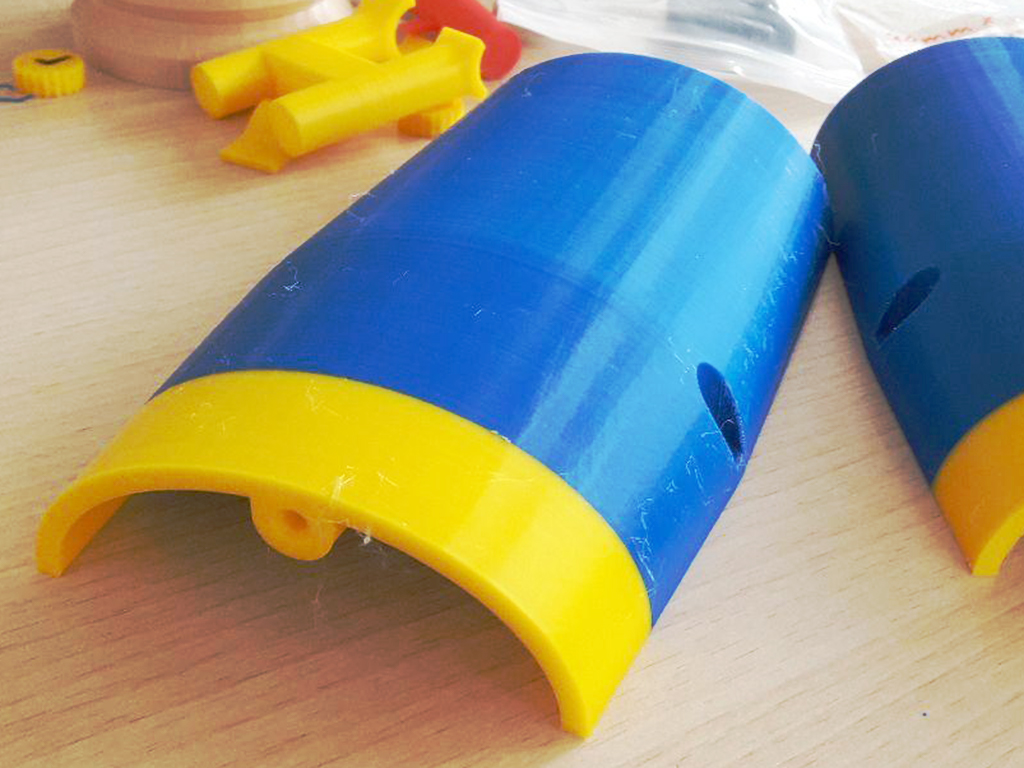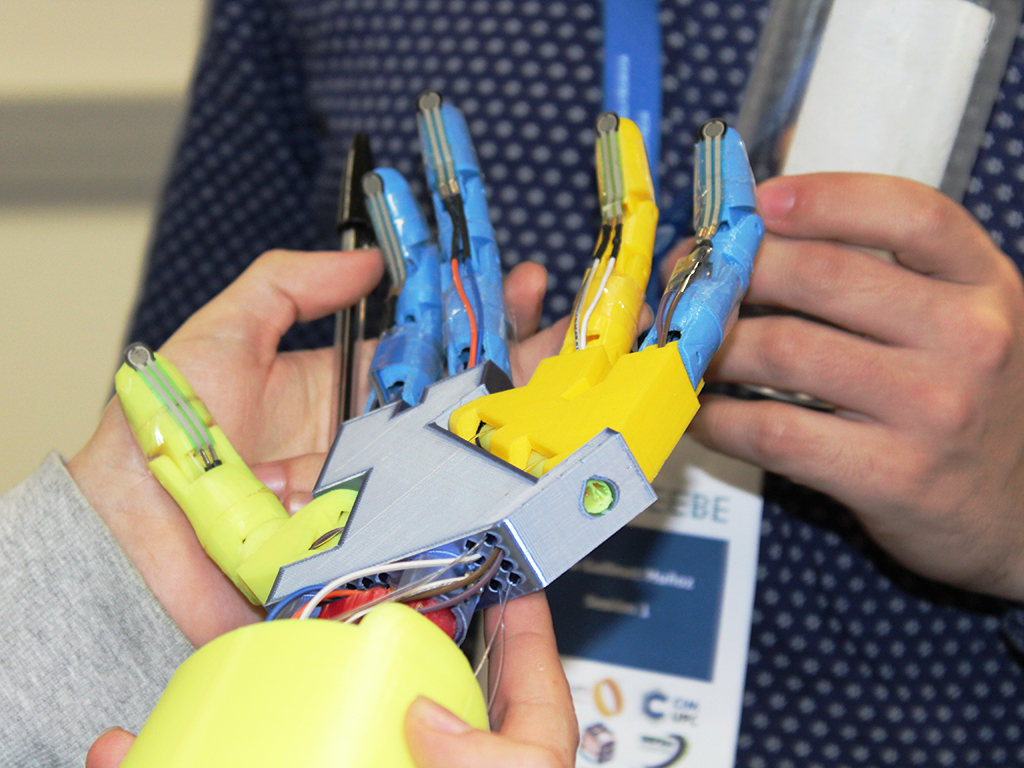The case study deals with the design and production of a myoelectric prosthesis by using additive technology. The main goal is to integrate the sensor system in a way the user can control the prosthesis with the help of muscle impulses. Another goal is to provide availability and minimal production costs.
The team consists of the student association FabLab EEBEst members, which is dedicated to the promotion of 3D printing and open source technologies in the university environment, and the association Bioneer, whose members are specialized in biometric sensors.
The design of the prosthesis is based on the fact that as many parts as possible can be 3D printed. Non-3D printed elements such as servomotors or sensors have been selected for their low level of complexity and cost.
The research team uses Fillamentum Flexfill TPU and PLA Extrafill for prosthesis printing. The reason is the stability of colors, even after printing it is very similar to the color of the skin.
Beige PLA is used for 3Dprinting of the visible parts to make the prosthesis looking more aesthetic. Parts made of this material are printed at higher temperatures than usual which surprisingly improved the printed object properties.

Flexfill TPU was used for printing protective elements on the wrist and fingers. The flexible material covers the moving parts of the prosthesis without disruption of the smooth movement of the wrist or the capture of force in the pressure sensors built into the fingers. The properties of the printed parts of the TPU varied depending on the design and printing parameters.
“During the project, we became well acquainted with the materials and their properties. The characteristics of the parts printed in TPU changed according to the design of the printed object and according to the 3D printer settings; after a closer acquaintance with the material, we printed the elements with the required properties, the printing was without any problems and the parameters of the printed parts met our expectations, “explain the students of FabLab EEBEst.

An Arduino microcontroller is used for the necessary data processing. The microcontroller interprets the muscle impulses detected by sensors located in the biceps, triceps, and brachia muscles and orders the activation of the motors. The motors then perform movements according to the activated muscles, so that the user can perform various gestures
Currently, the project is in the final stage. In October 2019, the team contacted Sant Joan de Déu Hospital and presented the project. The hospital uses 3D scanning and 3D printing technologies to help the doctors when diagnosing and preparation for surgeries.

On February 28, the prosthesis, also sponsored by Fillamentum, was presented at the EEBE 3DDay conference.
In March this year, before the quarantine was announced, representatives of FabLab EEBEst also met with representatives of the hospital in Mataró, but unfortunately the current coronavirus crisis has caused the suspension of cooperation.
We will inform you about the further development of the project.

| Cookie | Description |
|---|---|
| _dc_gtm_UA-189275971-1 | The functionality is to store number of service requests. |
| _ga | This cookie is installed by Google Analytics. The cookie is used to calculate visitor, session, campaign data and keep track of site usage for the site's analytics report. The cookies store information anonymously and assigns a randomly generated number to identify unique visitors. |
| _ga_L703XWXLV0 | This cookie is installed by Google Analytics. |
| _gat_gtag_UA_189275971_1 | Set by Google to distinguish users. |
| _gid | Installed by Google Analytics, _gid cookie stores information on how visitors use a website, while also creating an analytics report of the website's performance. Some of the data that are collected include the number of visitors, their source, and the pages they visit anonymously. |
| CONSENT | YouTube sets this cookie via embedded youtube-videos and registers anonymous statistical data. |
| Cookie | Duration | Description |
|---|---|---|
| VISITOR_INFO1_LIVE | 5 months 27 days | A cookie set by YouTube to measure bandwidth that determines whether the user gets the new or old player interface. |
| YSC | session | YSC cookie is set by Youtube and is used to track the views of embedded videos on Youtube pages. |
| yt-remote-connected-devices | never | YouTube sets this cookie to store the video preferences of the user using embedded YouTube video. |
| yt-remote-device-id | never | YouTube sets this cookie to store the video preferences of the user using embedded YouTube video. |
| yt.innertube::nextId | never | This cookie, set by YouTube, registers a unique ID to store data on what videos from YouTube the user has seen. |
| yt.innertube::requests | never | This cookie, set by YouTube, registers a unique ID to store data on what videos from YouTube the user has seen. |